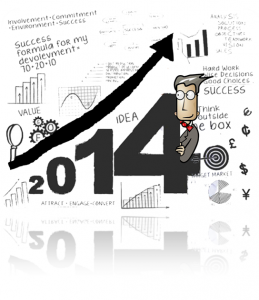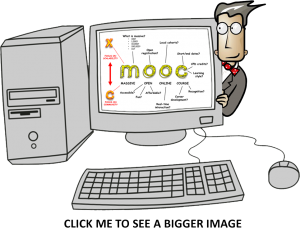 This year will mark a watershed in the way in which sales and marketing knowledge is shared across the world as technology continues to shape the way we work, play and learn.
This year will mark a watershed in the way in which sales and marketing knowledge is shared across the world as technology continues to shape the way we work, play and learn.
The following predictions on how e-learning might trend over the next five years (2014-19) is based analysis of key business drivers across different territories; learning and development (L&D) challenges facing many sales and marketing professionals and the interest in new methods of learning such as ‘gamification’ as well as ‘byte-size’ learning.
Open access for workers who want to improve their sales and marketing expertise
Europe and USA
In mature markets such as Europe and US, e-learning and blended learning for sales and marketing professionals has been in existence for at least a decade.
Over the next five years the following factors will be the key drivers for future development of e-learning:
- L&D content will need to be upgraded to ensure full mobile compatibility;
- new IT systems will provide opportunities for more L&D innovation as organisations merge and morph requiring the sales and marketing workforce to acquire new skills and expertise; and
- employees will be expected to take full ownership over their L&D by seeing this as a continuous rather than a one-off process.
India
L&D managers working within large organisations will increasingly seek more flexible ways for employees to maintain their sales and marketing skills whilst ‘on the job’. With the acceleration in the adoption of tablets, e-learning delivered across this platform is growing in importance, particularly as technology is reducing overhead costs.
Middle East
Many organisations are starting to experiment with e-learning environments. In addition, there’s Government interest and support for organisations to embrace e-learning as a cost-effective means of developing the skills and expertise of the workforce of tomorrow.
Africa
In countries such as Nigeria and Ghana where these economies are rapidly expanding ahead of the GDP growth rate of more developed nations, there’s a massive appetite for e-learning as education is a key driver for business change in these economies.
In each of these territories localisation of the content delivered is an important ingredient in the spread of e-learning within the sales and marketing sector.
Small content sizes, search, and performance support
Organisations that employ a younger sales and marketing workforce (18-24 years-old) already recognise that this generation of workers have much shorter attention spans and also have the challenge of retaining and applying what they’ve been taught. As a result, instructional designers are being challenged to re-wire their approach and think afresh – about how content can be made smaller yet more effective. This is leading to adoption of videos, animations, comics and other such interesting formats in learning delivery.
On the other hand, learning management system (LMS) providers are being pushed to add strong search capabilities, mobile compatibility, and enhance the user interfaces and usability of their systems in order to stay relevant in the forthcoming years.
There’s going to be a shift from Level 1/2/3 content to increasing the variety of content available. LMS providers will evolve and start making an impact with small-medium sized organisations in the first instance as larger enterprises will take time to adapt to new L&D environments over the next couple of years.
Localization
Sales and marketing employees are increasingly working across a diverse range of markets and customer segments. As a result, e-learning must take account of a wide variety of languages and cultures.
 Massive, open, online course (MOOC)
Massive, open, online course (MOOC)
In the past, MOOCs have been an extremely popular ‘flavour’ of e-learning as most have been designed for the widest possible appeal. However, over the next five years organisations’ needs and requirements for a well-educated and trained sales and marketing workforce will be radically different. As a result, many existing MOOCs will need to be re-wired to take account of specific needs and requirements, such as those faced by sales and marketing professionals in regulated as opposed to unregulated markets.
‘Gamification’
Typically, ‘gamification’ involves applying game design thinking to non-game applications to make them more fun and engaging and has been heralded as one of the most important trends in L&D in recent times. It’s highly likely that over the next five years sales and marketing professionals 18-24 years-old will engage with e-learning in very different environments.
As a result, LMS content will need to be re-purposed in order to create and sustain user interest with some form of personal career development recognition such as Continuing Professional Development (CPD) credits that signal their total commitment to their own long-term learning and development.














Recent Comments